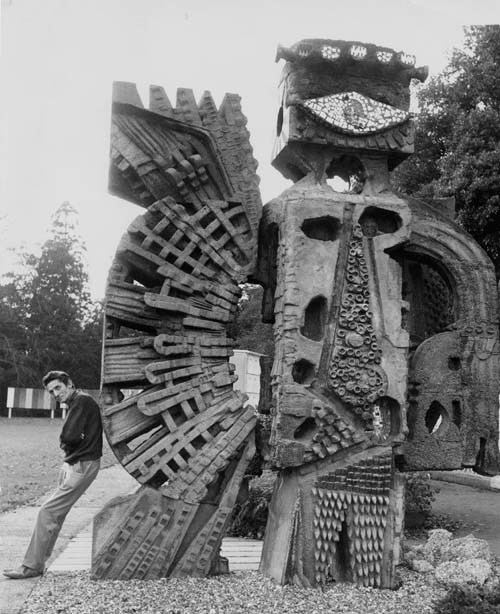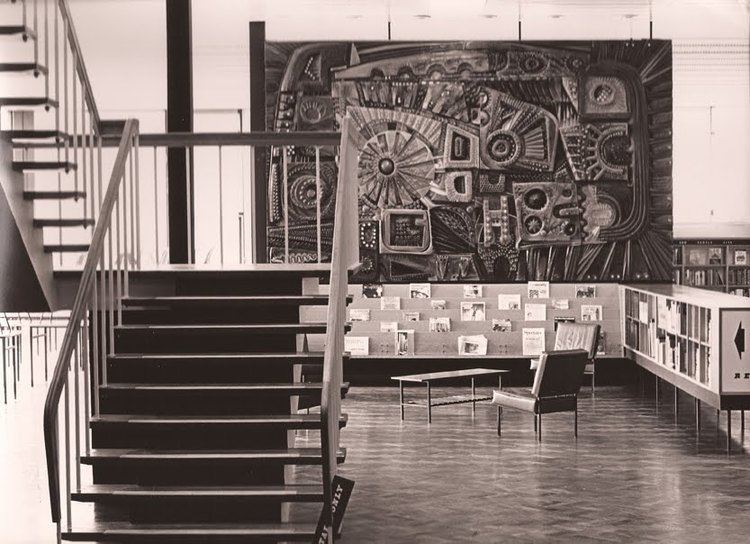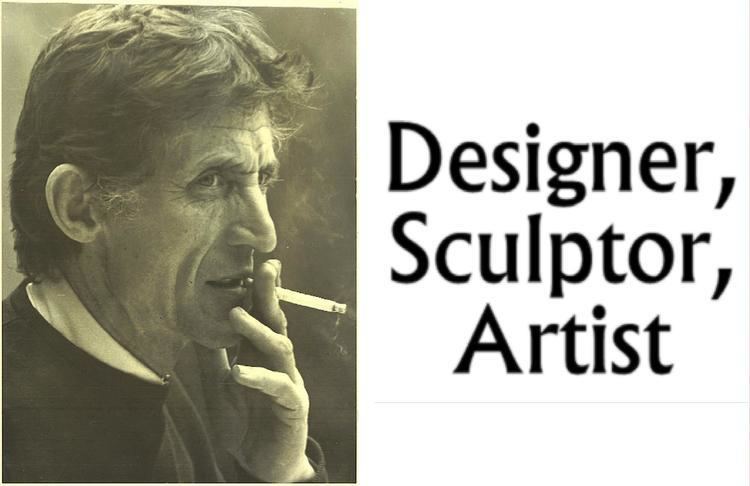Name William Mitchell | Role Sculptor | |
 | ||
William George Mitchell (born 1925) is an English sculptor, artist and designer. He is best known for his large scale concrete murals and public works of art from the 1960s and 1970s. His work is often of an abstract or stylised nature with its roots in the traditions of craft and "buildability". His use of heavily modelled surfaces created a distinctive language for his predominantly concrete and glass reinforced concrete (GRC) sculptures. After long years of neglect, many of William Mitchell’s remaining works in the United Kingdom are now being recognised for their artistic merit and contemporary historic value, and have been granted protective, listed status.
Contents

Personal life

William Mitchell was born in 1925 in London's Maida Vale. Serious illness in his early years and extensive periods in hospitals and convalescent homes, resulted in virtually no schooling.
Career

In 1938 Mitchell was apprenticed to an established London firm of decorators, where he was taught the basics of the trade, and developed a taste for the history and tradition of the craft. A three-year period of service in the Royal Navy followed after which he got a job painting scenes and panoramic views for the Navy, Army and Air Force Institutes (NAAFI), refurbishing and decorating their clubs and canteens across the world. After working for the Pearl Insurance Company as an Insurance Agent, Mitchell earned and saved enough money to pay for a more formal art education which included time at The Southern College of Art in Portsmouth and the Royal College of Art in London where he studied woods, metals and plastics and won both the Silver Medal and the prestigious Abbey Award entitling him to a fourth post-graduate year at the British School at Rome.

Upon his return from Italy, (where he had spent time in the offices of Gio Ponti, Pier Luigi Nervi and Pininfarina), Mitchell replied to an advertisement in one of the daily newspapers for a designer or artist to assist the London County Council Architects Department to design and produce decorative works for the many new developments then springing up across the City. His success in winning this appointment set him upon a course that enabled him to work with some of the UK’s most respected builders, architects and engineers of the time including Sir Frederick Gibberd, Sir Basil Spence, The Building Design Partnership and Sir Ove Arup.

From the 1950s, Mitchell produced work for a wide variety of clients. His initial appointment at the London County Council (LCC) allowed him to set up his own company in the early 1960s, a company which at one point employed over 40 skilled craftsmen and artists. Mitchell gained a reputation for reliability during this period, and this would help him develop what Dawn Pereira described as “a recognisable style that became known throughout Britain and internationally”, with his work appearing on schools, public housing, public subways, civic gardens, shopping centers and religious buildings.
Mitchell’s interest in experimentation, resulted in a wide range of projects that varied in both finish and style and which included the use of recycled timber and old furniture to create mosaics; the use of recycled glass, melted down and recast; the use of poured resin and polyurethane to add colour and the use of contemporary construction materials such as GRP (Glass reinforced plastic) and GRC (Glass reinforced concrete)to create large scale paneled installations. He was one of the few artists to investigate Faircrete, a John Laing developed concrete product that could be carved whilst still in a wet state, retaining these shapes once dry. His Stations of the Cross at Clifton Cathedral in Bristol are examples of this work. Mitchell also designed the huge internal concrete wall for the reception area at the Lee Valley Water Works in North London. This was reputed to be the largest single cast ever undertaken at that time and featured on the front cover of Concrete Quarterly magazine in Winter 1964. It was later granted grade II listed status. A number of in-depth articles and features in the UK construction press helped to confirm Mitchell’s reputation within the industry including Concrete Murals (in Concrete Quarterly – Summer 1963) and “Designer, Craftsman, Genius” (in The Architect – Dec 1975)
Mitchell appeared on several editions of the BBC show Tomorrow's World. In one appearance he explained a proposal for attaching a series of photoelectric cells to the 30m high flank wall of the Piccadilly Plaza Tower in Manchester.
In the 1980s Mitchell went to work in Qatar for the Royal Families designing and building both the Qatar Zoo and the extensive Doha Corniche waterfront promenade. He also worked for the BART (Bay Area Rapid Transit) in San Francisco, USA where he was responsible for designing and constructing many of the decorative panelling and sculptural installations at a number of stations across the system. The 1980s also saw Mitchell in Honolulu, Hawaii where he created the modelled surroundings of the Civic Square.
Mitchell spent many years as artistic design adviser to Mohammed Al Fayed and was responsible for the overall design and for the carving and modelling of the panels for the Egyptian Hall and the Egyptian escalator at Harrods. Other projects that Mitchell was involved in that never got off the ground whilst working for Al Fayed included a footbridge over the River Thames linking Fulham Football ground to the southern shore and a Harrods themed hotel and experience proposal for the strip at Las Vegas.
Mitchell has been a member of the Design Advisory Board, Hammersmith College of Art, Trent Polytechnic, Formwork Advisory Committee and the Concrete Society, and is a regular on the construction lecture circuit, both in his home country and abroad (especially the USA), being described as a “Doyen of British muralists” at a presentation he gave in 2007 to the Tile and Ceramics Society
Work
Mitchell's key works from the 1960s and 70s include:
